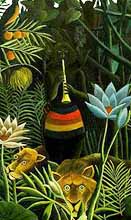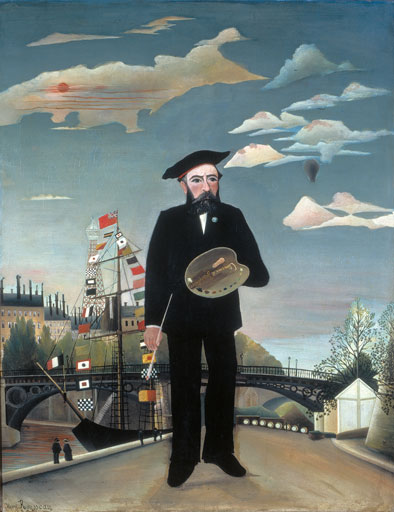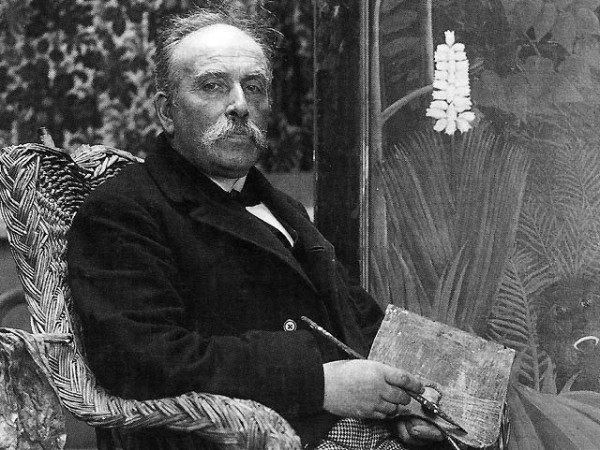The Last Painting of Henri Rousseau
1910
Oil on canvas
6′ 8 1/2″ x 9′ 9 1/2″
The Museum of Modern Art, New York
Henri Rousseau
Rousseau wrote this about the painting:
Rousseau died September 4, 1910, of blood poisoning that resulted from an infected leg wound after he cut himself on the leg. At this point, I cannot find information that tells me whether the blood poisoning occurred as he was finishing this painting, although it seems unlikely since the the painting was shown several months before his death.
Note, however, the very dark and strange figure (the “enchanter”) at the center of the piece:

In Von Franz’s book On Dreams and Death, she suggests that dreams about vegetation often precede death. Rousseau, of course, had lots of paintings with jungle vegetation in them, but I would suggest that this one has the most of any of his paintings.
If you review other paintings in this series about the last paintings, a number of them seem to be primarily about vegetation — Remedios and her circling fruits, Kahlo (and Rivera) with watermelons, Von Gogh with wheat fields. Dali and Klein did not follow in this trend, though their paints were clearly about the Void.
The Dream is exhibited in the Museum of Modern Art in New York. An exhibition that started with The Dream included this description:
The Dream , as the exhibition’s starting point in the rooms of the Mies van der Rohe building, seems to arrest a state that has been forever lost – an apparently childish, simple world that resembles a botanical Garden of Eden. As though tamed by beauty, music, and the power of art, the wild cats loom transfixed among rich green leaves. Rousseau’s dream image is almost magically static, imbued with standstill and contemplation. At the same time, however, this primitive idyll is deceptive. Perspective dissolves in this jungle landscape, becomes reduced to elementary forms. Taking the place of vanishing lines are clear overlapping shapes composed into an unreal, flat space that seems to anticipate the surreal and fantastic art of the coming decades. (Source)
From Wikipedia:
Henri Julien Félix Rousseau (May 21, 1844 – September 2, 1910) was a French Post-Impressionist painter in the Naive or Primitive manner. He was also known as Le Douanier (the customs officer), a humorous description of his occupation as a tax collector. Ridiculed during his life, he came to be recognized as a self-taught genius whose works are of high artistic quality.



One Comment